
GLOSSARY
Barre (v.)Left-hand technique that involves using a finger to press on several strings at once in the same fret.
Barre Chord A chord involving one finger pressing across several strings at once in the same fret.
Body The hollow lower portion of the ukulele in which sound resonates.
Bridge The raised structure on the body of the ukulele below the sound hole; it contains the lower anchor point of the strings.
Chord Diagram A form of notation in which a grid representing the strings and frets of the ukulele shows where fingers should be placed to play a particular chord.
Chord Formation The arrangement of the fingers for a chord position, regardless of location on the fretboard.
Chord Position The exact location of the fingers on the fretboard needed to play a specific chord.
Fret (n.) or Fret Wire The raised metal band on the fretboard that shortens the vibrating area of the string when a finger is pressed behind it.
Fret (v.)The act of pressing a string into the space between two neighboring fret wires (or the nut).
Fretboard or Fingerboard The top surface of the neck, sometimes extending onto the top surface of the body, containing all frets.
Fret Marker Inlay markings on the fretboard in specific frets, indicating where common intervals relative to pitches of the open strings are located.
Fretted Note A note requiring the string to be pressed into a fret.
Fretted String A string whose vibrating area is shortened by pressing it into a particular fret.
Head or Headstock The top portion of the ukulele where the strings are anchored and from which they may be tuned.
Lead Sheet A piece of sheet music containing only a melody (including any lyrics) and chord names.
Neck The middle portion of the ukulele connecting the head and the body.
Nut The notched band holding the strings in place at the top of the fretboard.
Open String A string played without fretting.
Picking or Fingerpicking Using the thumb and finger(s) to pluck strings.
Saddle The raised part of the bridge over which the strings pass before being attached to the bridge itself.
Soundboard The front face of the ukulele body.
Sound Hole The hole in the body underneath the strings from which reverberated sound projects.
Strumming Using the thumb or finger(s) to brush across several strings in one motion.
Sustain The degree to which sound continues after a string is plucked or strummed.
Tablature System of notation containing four horizontal lines, representing the strings of the ukulele, with numbers placed on the lines indicating which fret to hold while picking or strumming. Read from left to right, with vertical stacking of simultaneously sounded pitches.
Tuner or Tuning Peg The mechanism used for tightening or loosening a string to change the pitch.
UKE CAN DO IT!
Published in partnership with NAFME: National Association for Music Education
Published by Rowman & Littlefield
4501 Forbes Boulevard, Suite 200, Lanham, Maryland 20706
www.rowman.com
10 Thornbury Road, Plymouth PL6 7PP, United Kingdom
Copyright 2014 by Philip Tamberino
All illustrations created by the author.
All rights reserved . No part of this book may be reproduced in any form or by any electronic or mechanical means, including information storage and retrieval systems, without written permission from the publisher, except by a reviewer who may quote passages in a review.
British Library Cataloguing in Publication Information Available
Library of Congress Cataloging-in-Publication Data
Tamberino, Philip, author.
Uke can do it! : developing your school ukulele program / Philip Tamberino. pages cm
Includes index.
ISBN 978-1-4758-0415-7 (cloth : alk. paper) ISBN 978-1-4758-0416-4 (pbk. : alk. paper) ISBN 978-1-4758-0417-1 (electronic) 1. UkuleleInstruction and study. 2. School musicInstruction and studyUnited States. I. Title.
MT801.U4T36 2014
 The paper used in this publication meets the minimum requirements of American National Standard for Information SciencesPermanence of Paper for Printed Library Materials, ANSI/NISO Z39.48-1992.
The paper used in this publication meets the minimum requirements of American National Standard for Information SciencesPermanence of Paper for Printed Library Materials, ANSI/NISO Z39.48-1992.
Printed in the United States of America
Dedicated with love to my grandfather, Philip Tamberino (19142005), a true lover of the ukulele and believer in education.
PREFACE
W hen I first proposed a classroom ukulele program for a pilot class of third graders in my school, it was a new frontier for me and the school alike. Not only had it never been done in my district, no one was familiar with it being done anywhere else. Third graders were supposed to learn the recorder. I had never heard the ukulele mentioned in my teacher training or in any of the professional journals I read. The school music program supply catalogs that inundated my mailbox over the summer did not even advertise ukuleles at the time. And mentioning the ukulele to anyone over a certain age almost always prompted a reference to Tiny Tim.
Fortunately, the ukulele was not so obscure to me. I knew it from my childhood, from experiences listening to my grandfather singing and playing it in his reclining chair that I will never forget. He had enjoyed it as a pastime from his own childhood and continued playing into his nineties. In my own life experience up to that point, the ukulele had not been treated as a serious instrument in popular culture, but any instrument that could endear itself to a person for that long was serious to me in the best way possible.
As a new teacher, I thought about my grandfather playing the ukulele both as a boy and as a senior citizen, and I began to wonder why students could not learn the ukulele in school. It seemed ideal: They could sing and play at the same time, they could play chords or melodies or rhythm, it was virtually impossible to make an offensive sound with it, and it didnt require any special sizing for even the youngest children. Moreover, the ukulele seemed to have features that might shield it from the high attrition rates of many other school instruments: It was not costly to own, it was just as satisfying to play alone as with others, and it could be taken and practiced almost anywhere or anytime. In studying the ukulele and researching the topic, I concluded there was no better instrument to satisfy the interests of students and the music program alike.
The school supported me in piloting a classroom-based program, and with no materials for classroom ukulele readily available at the time, I developed my own. Before long the students were playing songs, teaching each other new chords, and even composing their own music. Families and staff delighted at the sight and sound of small children playing what looked like small guitars at that first spring concert, and the ukulele became a permanent part of the program thereafter. Community interest in the ukulele was piqued as well, prompting the creation of an adult education course with the school board president, school nurse, reading specialist, district clerk, and community members on the roster.
Throughout that period I wondered why the ukulele seemed so completely off the radar of the school districts in my area (if not most areas outside the Pacific states). New York was far away from Hawaii, but so were Canada, New Zealand, and the United Kingdomall places, I learned, that had successful programs of various scale. This was not a new idea in music education, in fact its success seemed to have been replicated several times over. Convinced that the problem was only a lack of awareness and support, I sought opportunities to promote the use of the ukulele in schools to other music teachers and students beyond my own district. Again, the reception was strong, especially among preservice and younger in-service teachers who had fewer preconceptions about the instrument or who had already began playing on their own. This book is essentially an outgrowth of presentations and workshops I conducted to that end.
Next page

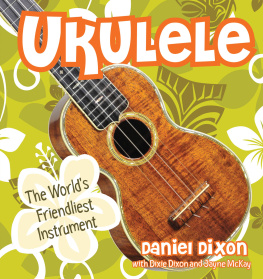
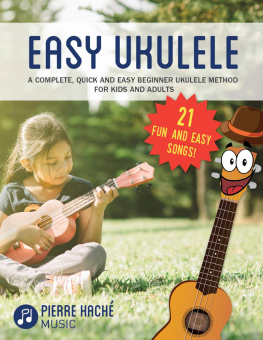
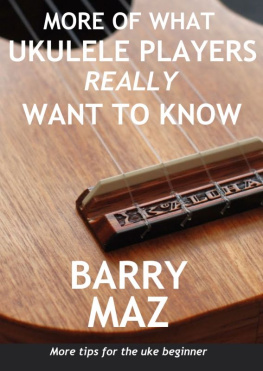

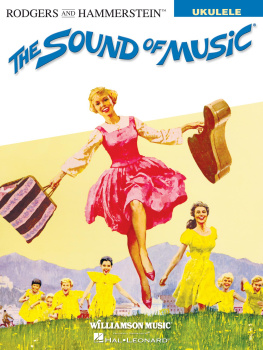
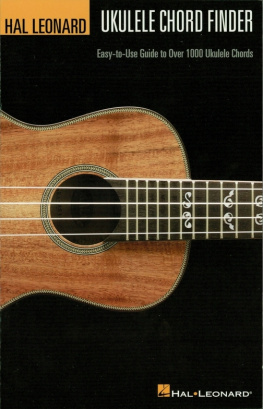


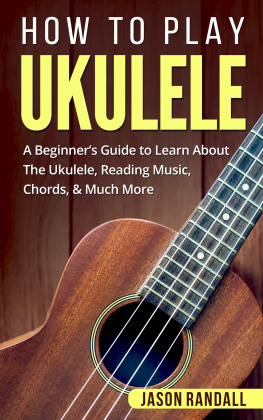
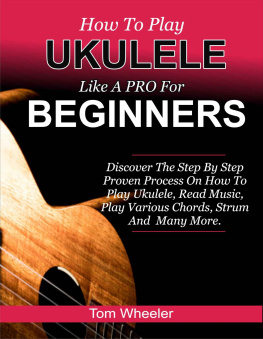
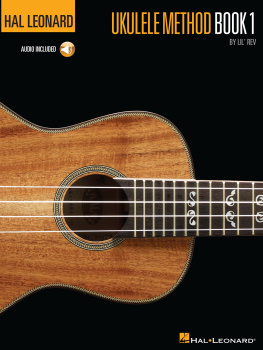

 The paper used in this publication meets the minimum requirements of American National Standard for Information SciencesPermanence of Paper for Printed Library Materials, ANSI/NISO Z39.48-1992.
The paper used in this publication meets the minimum requirements of American National Standard for Information SciencesPermanence of Paper for Printed Library Materials, ANSI/NISO Z39.48-1992.